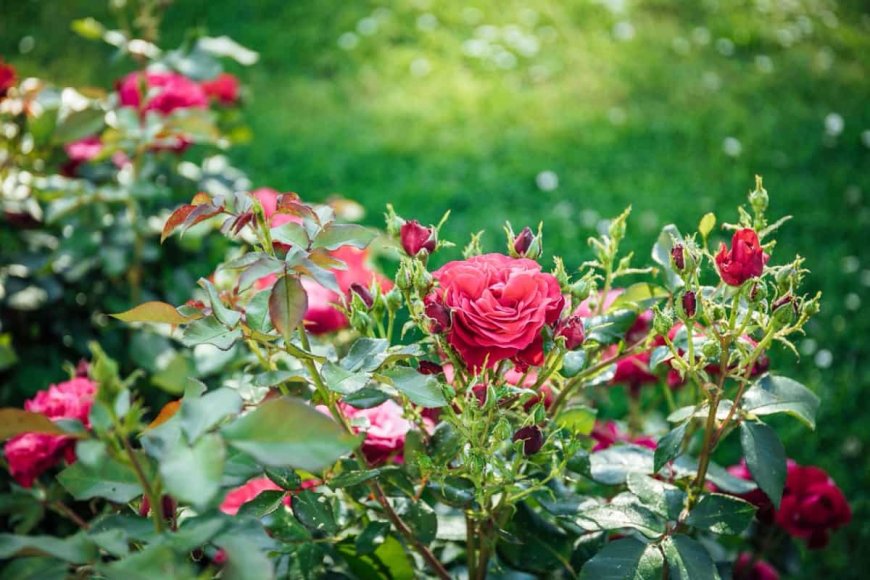Understanding the Harvesting Process in Rose Farming
Rose farming in India is very profitable for farmers who are willing to put their time into planning and care.

Roses are one of the most popular flowers worldwide, and they are used for decorations, gifts, and the production of certain oils and perfumes. In India, the demand for roses is very high as they are required at weddings and religious festivals. Roses can be grown in different regions, from small-scale production to large farms. If you want to successfully cultivate roses, then there are a few things that you have to keep in mind, such as climate, soil, irrigation, and pest control.
To learn more about rose farming in India, you can read the information given below. This blog will provide you with all the relevant information on roses.
Step-by-Step Guide to Successful Rose Farming
If you want to understand the complete process of rose farming, then below is a step-by-step guide:
1. Choosing the Right Variety of Rose
There are multiple types of roses available, and each of them is adapted to different growing conditions. Following are the main varieties of roses cultivated in India:
-
Hybrid Tea Roses: These roses are famous for their large, stylish blooms and long stems. Their demand is high in the cut flower market.
-
Floribunda Roses: Known for the bushes, this rose makes clusters of flowers. They are best for landscapes and garden displays.
-
Climbing Roses: These roses are perfect for decorative purposes and are mostly grown on fences, arbours or as ground cover.
-
Miniature Roses: Ideal for small-scale farming, these roses are thick and sold in small pots. Their demand is increasing rapidly in the global market.
2. Climate and Temperature Requirements
Roses are moderate-climate plants that are favourable to grow in different climates. The perfect temperature for rose farming is between 15°C and 20°C. They can grow at temperatures up to -5°C.
-
Sunlight: A minimum of 6 hours of direct sunlight is necessary for roses to grow. Lack of sunlight may result in poor growth.
-
Humidity: Average humidity levels are best, and over-humidity may increase the chances of fungal diseases.
-
Rainfall: Roses require regular watering, and they do not grow well in waterlogged soil. If the region experiences regular rain, then make sure you have a proper drainage system.
3. Soil Preparation
Roses grow well in loamy soil, which is high in organic matter. The pH level of the soil should be between 6.0 to 6.5. The preparation of soil plays an important role in rose farming, as it directly affects the health and growth of the plants.
To boost productivity and efficiently handle farming, you can use Mahindra Tractors. One of their models is the Mahindra 265 DI XP plus, which is reliable for heavy lifting and working long hours. Its 2048 CC engine produces 33 HP. The Mahindra 265 DI XP Plus price in India ranges between Rs 5.76 lakhs to Rs 5.92 lakhs.
4. Planting and Spacing
To ensure proper airflow and growth, space the rose plants sufficiently. Hybrid tea roses need a spacing of 18 to 24 inches between plants, and floribundas require a little extra spacing. If you are planting the roses bare-root, then ensure to plant the bud union above the soil level. Spring or fall season is the best time to plant roses.
5. Irrigation and Watering
Roses need continuous moisture but do not allow waterlogging. A better irrigation system is important for healthy rose farming. Drip irrigation is considered the best method to water rose plants as it delivers the water directly to the roots without much water wastage. Prefer watering the plant in the morning to avoid fungal diseases. To keep the soil temperature stable, apply a layer of mulch around the base of the plant.
6. Fertilization
Rose plants require a lot of nutrients and regular fertilization to produce vibrant blooms. The most common fertilizer used is 10-10-10 NPK (Nitrogen, Phosphorus and Potassium). When the plants are in their growing season, then fertilize them for at least 4 to 6 weeks. However, in the dormant stage, minimise the fertilization to avoid growth at the wrong time.
7. Pest and Disease Management
Roses are vulnerable to different types of pests and diseases, including spider mites, aphids, powdery mildew and black spots. Continuous monitoring and taking the right precautions is a key to growing a healthy plant. Insecticidal soaps and Neem oil have a huge impact on several pests. If you are farming in a region with high humidity, then spraying fungicide is a must.
8. Harvesting and Post-Harvest Care
After that comes the harvesting process, which is very important to make sure that the roses stay in their best condition for use or sale. The best time to harvest the roses is when the buds have started to open and the outer petals have extended.
Once the harvesting process is completed, transport them to a cold place. For transporting purposes, you can use a tractor. Currently, one of the most powerful tractors in the market is Mahindra 275 DI TU. You can lift upto 1200kg of weight with the tractor. Furthermore, in India, the Mahindra 275 DI TU price starts from Rs 6.15 lakhs. The tractor is very reliable for farming and is low on maintenance.
Conclusion
Rose farming in India is very profitable for farmers who are willing to put their time into planning and care. The demand for roses is increasing in domestic and international markets. To produce the best quality roses, every step is important, from picking the right variety to controlling pests and diseases. If the farmer pays regular attention and takes good care of the plants, then they can earn well in this growing business.
What's Your Reaction?
























